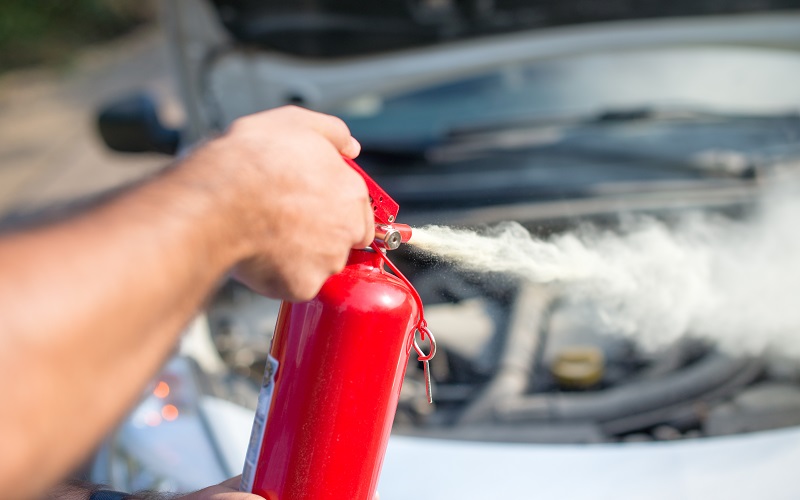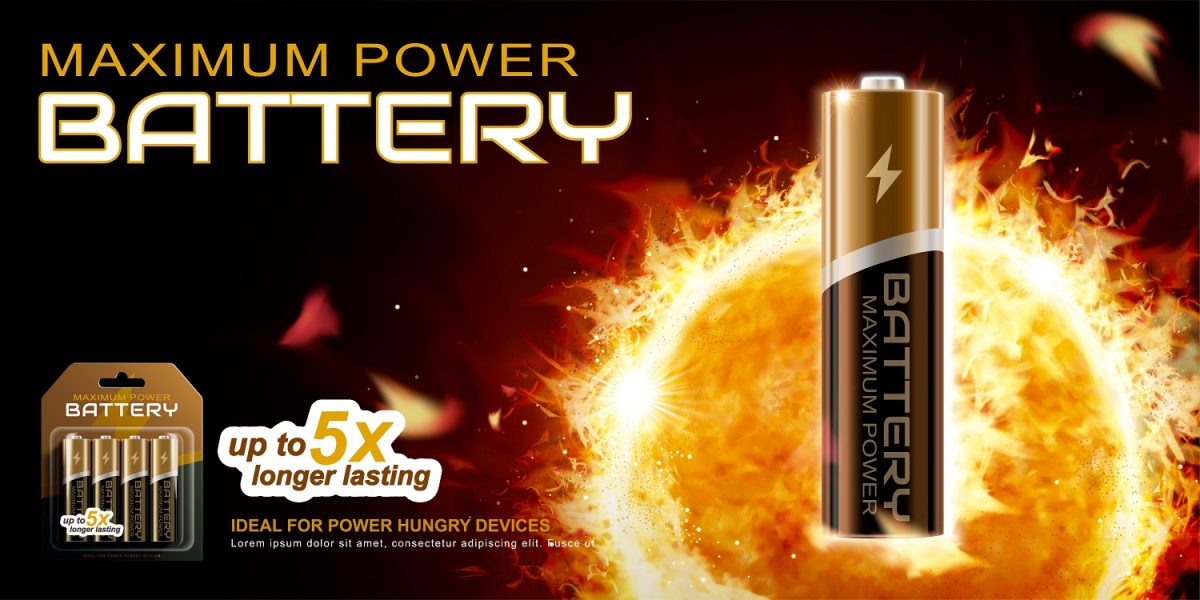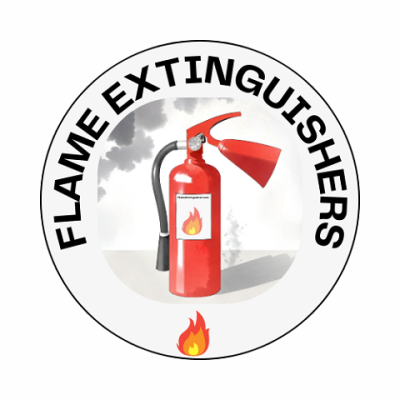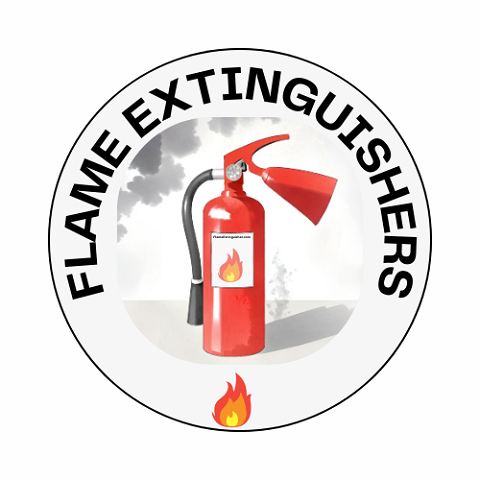Hey, folks, Michael McCloud here, your go-to guy on flameextinguisher.com, where we take fire safety seriously. Today, we’re diving into the wild world of battery fire extinguishers – because let’s face it, in this tech-driven era, lithium batteries are everywhere, and where there’s power, there’s the potential for fire.

So, picture this: You’re at home, your phone’s charging on the kitchen counter, and suddenly, you smell something burning. Panic sets in as you realize the culprit is none other than your trusty smartphone – it’s gone rogue, and you’ve got a lithium battery fire on your hands.
Now, here’s where a lithium battery fire extinguisher becomes your superhero. You grab it, unleash a burst of firefighting magic, and just like that, the threat is neutralized. But let’s rewind and break down the importance of these extinguishers.
First off, why lithium batteries?

Well, they’re the powerhouse behind our gadgets, from smartphones to laptops and electric cars. But, and it’s a big but, they can go from being your best tech buddy to a fiery nemesis faster than you can say “power surge.”
Apple uses Lithium batteries and here is what they say on why they choose lithium-ion batteries. “Compared with traditional battery technology, lithium-ion batteries charge faster, last longer, and have a higher power density for more battery life in a lighter package. When you know a little about how they work, they can work that much better for you.”
What If, My Electric Car Catches Fire? Do I Try To Douse The Flames With Battery Fire Extinguishers?
Speaking of power surges, imagine this scenario. You’re cruising down the highway, living your electric car dream, and suddenly, smoke starts billowing from “under the hood” or unfortunately under your seat. It’s not a scene from a sci-fi flick; it’s a potential lithium battery catastrophe. This is where a lithium battery fire extinguisher in your trunk becomes the unsung hero, ready to tackle the flames and keep your dream ride from turning into a blazing nightmare.
It is actually recommended to stand back and do not engage in an electric car fire. Despite being prepared with your own battery fire extinguisher, it is common for even some fire fighting crews to be unable to douse the flames of an electric car fire.
But what makes battery fire extinguishers so special?
Lithium battery fires require a unique approach. Water won’t cut it – in fact, it could make things worse. That’s where the magic formula in these extinguishers comes into play. Battery fire extinguishers are like the superheroes of the firefighting world, swooping in to cool down the blazing intensity of lithium battery fires. Their mission? Smothering the flames without pulling any chemical shenanigans that could turn a bad situation into a fiery spectacle.
| Fire Class | Fuel Type | How to Suppress | Fire Extinguisher Type |
|---|---|---|---|
| Class A | Ordinary Combustibles | Water, Foam, or Multi-Purpose Dry Chemical | Water or Multi-Purpose Extinguisher |
| Class B | Flammable Liquids and Gases | CO2, Dry Chemical, Foam, or Halon | CO2 or Dry Chemical Extinguisher |
| Class C | Electrical Equipment | CO2, Dry Chemical, or Halon | CO2 or Dry Chemical Extinguisher |
| Class D | Combustible Metals | Specialized Dry Powder or Sand | Class D Extinguisher |
| Class K | Cooking Oils and Fats | Wet Chemical or Class K Dry Powder | Wet Chemical or Class K Extinguisher |
Lithium Battery Fires Are Considered Class D Fires
- Fires in combustible metals, such as magnesium, titanium, zirconium, sodium, lithium, and potassium.
There are quite a few types of fire extinguishers. Like, Foam fire extinguishers, Water fire extinguishers, Co2 fire extinguishers, and wet/dry chemical fire extinguishers. Class D fire extinguishers are dry powder extinguishers.
Some interesting alternative options that are newer in the market:
Now, let’s get back to our kitchen counter drama. Your phone is smoldering, and you’re reaching for that lithium battery fire extinguisher like it’s a lightsaber in a galaxy far, far away. Transitioning to the real deal – these extinguishers are compact and easy to use, making them your first line of defense in a lithium battery fire emergency.
But wait, there’s more. These extinguishers are not just for tech geeks or electric car enthusiasts. In our tech-centric world, we all have devices powered by lithium batteries, and the potential for a fire is real. It’s not a matter of if but when – and being prepared is key.
15 Common Lithium Ion Battery Powered Devices In The Average Home
- Smartphones
- Laptops
- Tablets
- Smartwatches
- Cordless power tools
- Digital cameras
- Remote control toys
- Bluetooth headphones
- Portable speakers
- E-book readers
- Electric toothbrushes
- Handheld gaming consoles
- Cordless vacuum cleaners
- Smart thermostats
- Battery-operated smoke detectors
While lithium-ion battery-powered devices have become integral parts of our daily lives, it’s essential to be aware of the potential fire risks associated with them.
Here are some common ways Battery Powered Devices can catch fire:
- Overcharging:
Leaving devices plugged in beyond their charging capacity can lead to overheating, causing the lithium-ion battery to malfunction and potentially catch fire. - Faulty Charging Equipment:
Hooking up your precious devices to bargain-basement chargers or those battered and bruised ones not meant for them is like inviting trouble to a tech party. The result? Electrical chaos, the kind that turns your gadgets into heat factories, potentially sparking flames and causing all sorts of mayhem. - Battery Damage:
Physical damage to the battery, such as punctures or crushing, can compromise the integrity of the battery cell, increasing the risk of a thermal runaway reaction. - Manufacturing Defects:
Occasionally, manufacturing defects or errors in the production of lithium-ion batteries can lead to internal short circuits, causing fires. - Poor Quality or Counterfeit Batteries:
Using substandard or counterfeit batteries that do not meet safety standards can be a significant fire hazard. - External Heat Sources:
Exposure to high temperatures, such as leaving devices in direct sunlight or near heat sources, can accelerate the aging process of lithium-ion batteries, increasing the likelihood of fires. - Prolonged Use and Age:
Over time, lithium-ion batteries degrade, and prolonged use can contribute to internal chemical reactions that may result in overheating and fires. - Physical Impact:
Dropping or subjecting devices to physical impacts can damage the battery and lead to internal short circuits, posing a fire risk. - Water Exposure: Lithium-ion batteries are highly sensitive to water. If a device with a lithium-ion battery is exposed to moisture, it can cause a short circuit and potential fire.
- Manufacturing Recalls:
In rare cases, manufacturing defects or safety concerns may lead to product recalls, and failure to replace or repair the affected devices could pose fire risks. - Third-Party Modifications:
Attempting to modify or repair devices without proper knowledge or using unauthorized third-party components can compromise the safety of the lithium-ion battery. - Poor Ventilation:
Inadequate ventilation during charging or operation can contribute to heat buildup, potentially leading to thermal runaway and fires. - Continuous High-Intensity Use:
Devices that require high power for extended periods, such as gaming or video streaming, can put stress on the battery, increasing the risk of overheating and fires.
Frequently Asked Questions
Q: What makes lithium battery fires different, and why do I need a specific battery fire extinguisher for them?
A: Lithium battery fires are unique because they involve highly reactive materials. A specialized extinguisher is necessary because it cools down the intense heat without triggering chemical reactions that could worsen the situation, ensuring effective and safe suppression.
Q: Can I use a regular fire extinguisher on lithium battery fires in an emergency?
A: While a traditional fire extinguisher may suppress flames, it’s not recommended for lithium battery fires. The specific formulation of a battery fire extinguisher is designed to address the unique challenges posed by lithium-ion batteries, providing a safer and more targeted solution.
Q: How often should I check and maintain my battery fire extinguisher?
A: Regular inspections are crucial. Perform visual checks monthly, and conduct operability tests annually. Additionally, schedule professional inspections as recommended by the manufacturer. Proper maintenance ensures your extinguisher is ready to tackle a lithium battery fire when needed.
Q: Are battery fire extinguishers suitable for all types of lithium-ion battery-powered devices?
A: Yes, these extinguishers are designed to handle fires associated with a variety of lithium-ion battery-powered devices, including smartphones, laptops, electric cars, and more. Their versatility makes them a reliable choice for safeguarding against potential fire risks.
Q: Can I use a lithium battery fire extinguisher on other types of fires?
A: While lithium battery fire extinguishers are specifically formulated for lithium-ion battery fires, they may also be effective on Class A, B, and C fires. However, it’s essential to follow the manufacturer’s guidelines and recommendations for the specific extinguisher you have to ensure optimal performance in various fire scenarios.
In conclusion, my fellow fire safety aficionados, the lithium battery fire extinguisher is your ticket to keeping the tech-induced flames at bay. Whether it’s your phone, your electric car, or your futuristic gadgets, having one of these extinguishers within arm’s reach might just save the day.
Stay vigilant, stay safe, and remember, in the battle against lithium battery fires, the right battery fire extinguisher is your best ally. Until next time, this is Michael McCloud signing off.
Our Term Of The Day:
Incipient Fire: The initial stage of a fire, typically characterized by a small flame or a smoldering phase.



Comments are closed.